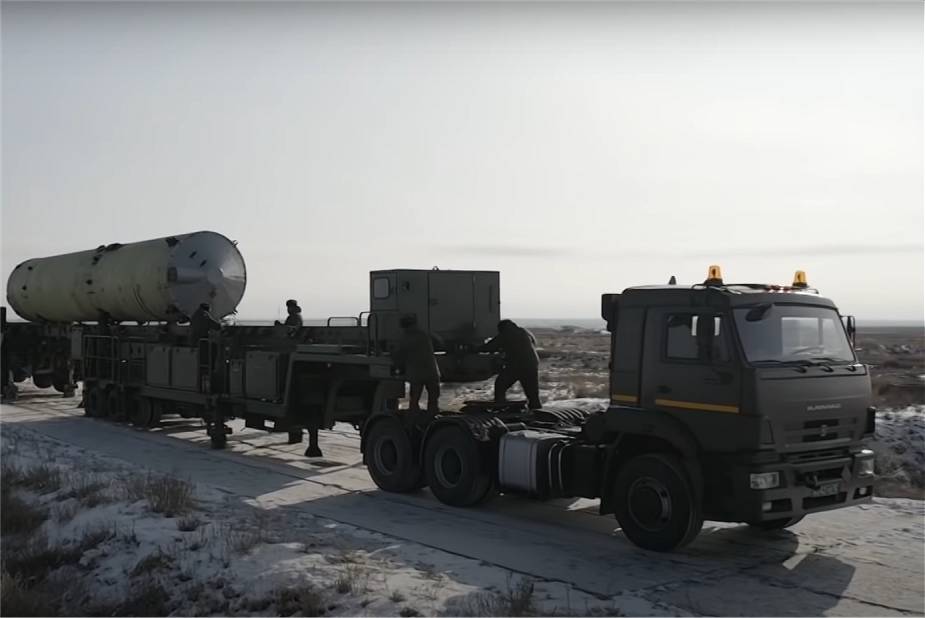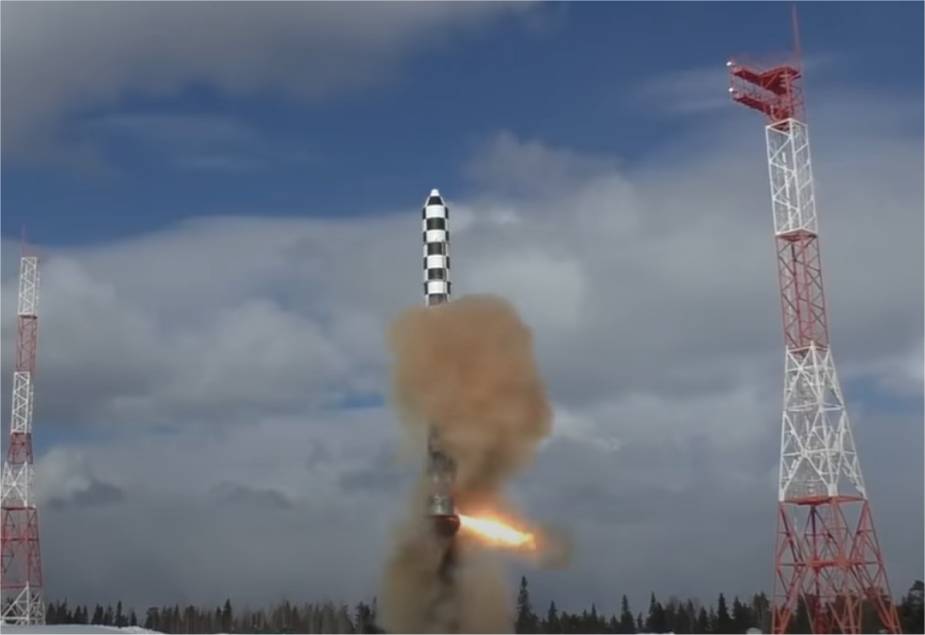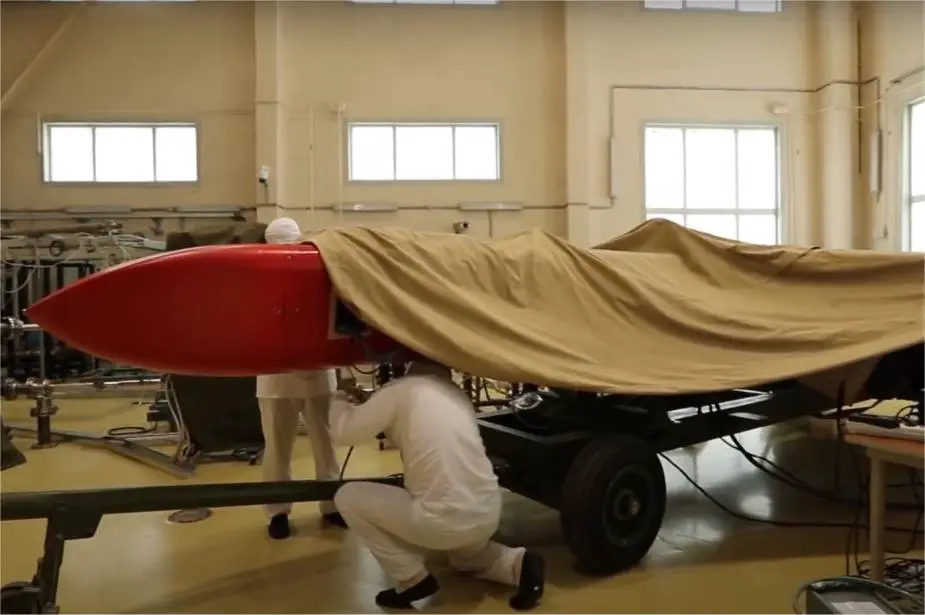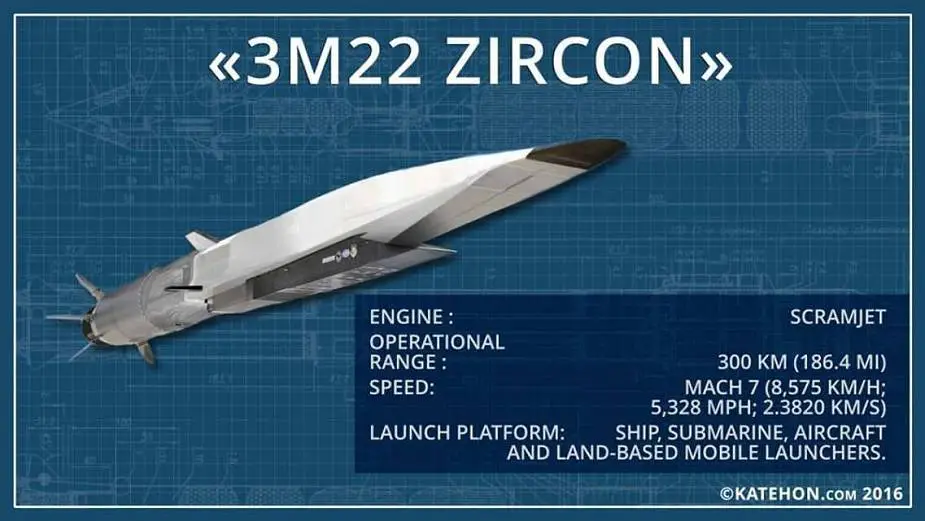Analysis: Russian armed forces military power of new nuclear ballistic missiles
According to information published by the Russian press agency TASS on November 26, 2020, Russia’s aerospace forces conducted another successful test of a new ballistic missile of the Russian missile defense system at the Sary-Shagan firing range in Kazakhstan, the Russian defense ministry said on Thursday, November 26, 2020.
Follow Army Recognition on Google News at this link

On November 26, 2020, the Russian armed forces have conducted a firing test of a new ballistic missile. (Picture source Russian MoD)
According to a U.S. congress report Russia has a variety of delivery systems that can carry nuclear warheads to shorter and intermediate ranges. These systems are generally referred to as non-strategic nuclear weapons, and they do not fall under the limits in U.S.-Soviet or U.S.-Russian arms control treaties. According to unclassified reports, Russia has a number of nuclear weapons available for use by its “naval, tactical air, air- and missile defense forces, as well as on short-range ballistic missiles.
Recent military analyses indicate that Russia is both modernizing existing types of short-range delivery systems that can carry nuclear warheads and introducing new versions of weapons that have not been a part of the Soviet/Russian arsenal since the latter years of the Cold War.
Russia has an extensive infrastructure of facilities for the production of nuclear weapons and missiles, although it has consolidated and reduced the size of this infrastructure since the end of the Cold War. Moreover, Russia has improved the security of its nuclear weapons facilities through U.S.-Russian cooperation under the Nunn-Lugar CTR program.
Russia has about a dozen research institutes and facilities that participate in the design and manufacture of nuclear and nonnuclear components for its nuclear weapons, provide stockpile support and engage in civilian nuclear and other research. Russia, which has a significant stockpile of weapons-usable materials, no longer produces highly enriched uranium or plutonium for use in nuclear weapons.
In addition to replacing aging Soviet-era ICBMs, SLBMs, and ballistic missile submarines, Russia is developing several kinds of nuclear delivery vehicles. Some of these, like the Sarmat ICBM, may replicate capabilities that already exist; others could expand the force with new types of delivery systems not previously deployed with nuclear warheads.
Currently, Russia develops a wide range of nuclear capable missiles including the Avangard Hypersonic Glide Vehicle (HGV) that can be carried as a MIRV payload by the UR-100UTTKh, R-36M2 and RS-28 Sarmat heavy ICBMs (InterContinental Ballistic Missiles). A multiple independently targetable reentry vehicle (MIRV) is a missile payload containing several warheads, each capable of being aimed to hit a different target. The concept is almost invariably associated with intercontinental ballistic missiles carrying thermonuclear warheads, even if not strictly being limited to them.

Test launch of Russian-made RS-28 Sarmat ICBM InterContinental Ballistic Missile (Picture source Russian MoD)
The Avangard hypersonic glide vehicle (HGV), 79 previously known as Project 4202, is a reentry body carried atop an existing ballistic missile that can maneuver to evade air defenses and ballistic missile defenses to deliver a nuclear warhead to targets in Europe and the United States.
The RS-28 Sarmat (SS-X-30) missile is a liquid-fueled heavy ICBM that Russia intends to eventually deploy as a replacement for the SS-18 heavy ICBM. It will be capable of carrying about 10 tonnes of payload for either up to 10 heavy or 15 light MIRV warheads, an unspecified number of Avangard hypersonic glide vehicles (HGVs) or a combination of warheads and massive amounts of countermeasures against anti-ballistic missile systems.
According to various sources, RS-28's launch sites are to be equipped with the "Mozyr" active protection system, designed to negate potential adversary's first strike advantage by kinetically destroying incoming bombs, cruise missiles and ICBM warheads at altitudes of up to 6 km. The missile has an operational range of 18,000 km. The RS-28 Sarmat is expected to enter service in 2021.
The Poseidon is a nuclear-powered autonomous underwater vehicle (also known under NATO name of Status 6 or Kanyon). The autonomous underwater vehicle, or drone, could reach a depth of 1,000 meters, go at a speed of 100 knots, and have a range of up to 10,000 km. The slide indicated that the system would be tested between 2019 and 2025. Press reports indicate, however, that Russia has been testing the system since at least 2016, with the most recent test occurring in November 2018. However, the system may not be deployed until 2027.
Russia may deploy the Poseidon drone on four submarines, two in the Northern Fleet and two in the Pacific Fleet. Each submarine would carry eight drones. According to some reports, each drone would be armed with a two-megaton nuclear or conventional payload that could be detonated “thousands of feet” below the surface.

In July 2018, it was announced that Russia has started the production of intercontinental cruise missiles 9M730 "Burevestnik" with a nuclear engine.
The 9M730 Burevestnik (SSC-X-9 Skyfall) is a nuclear-powered cruise missile intended to have an “unlimited” range because it would be powered by a nuclear reactor. According to Vladimir Putin and the Russian Ministry of Defense, the missile's dimensions are comparable to those of the Kh-101 cruise missile and it is equipped with a small-sized nuclear power unit. The claimed operational range is orders of magnitude greater than that of Kh-101.
According to Nezavisimaya Gazeta, Burevestnik is a nuclear thermal rocket with a solid-fueled booster engine. The length of the missile is 12 m (39 ft) at launch and 9 m (30 ft) in flight. The nose has the shape of an "ellipse 1 m (3.3 ft) × 1.5 m (4.9 ft) in size
Russia is developing a nuclear-capable air-launched ballistic missile, known as the Kh-47M2 Kinzhal, that could be launched on MiG-31K interceptor aircraft or Tu-22M bombers. According to press reports, the Kinzhal is a variant of the Iskander short-range ballistic missile currently in service with the Russian Armed Forces. The air-launched version may be intended to be launched while the aircraft is at supersonic speeds, adding to the system’s invulnerability to U.S. air and missile defenses.
The Kinzhal missile is designed to target US and NATO warships posing a threat to strategic missile systems in Russia’s European part and to destroy NATO missile defence system and ballistic missile defense ships and land targets close to Russia borders.
The Kinzhal missile first stage is probably shared with 9K720 Iskander and the guidance section is specifically designed for this missile. It is capable of attacking fixed and movable targets such as aircraft carriers. The missile accelerates to hypersonic speed within seconds of launch and performs maneuvers at all stages of the flight trajectory to evade enemy missile defenses.
Russian media claims the missile's range will be 2,000 kilometers when carried by the MiG-31K fighter aircraft and 3,000 kilometers when carried by the Tu-22M3 supersonic strategic bomber.

Russian-made Tsirkon 3M-22 anti-ship hypersonic cruise missile (Picture source Katehon.com)
Russia has been developing the Tsirkon (3M-22, NATO designated SS-N-33), an anti-ship hypersonic cruise missile, since at least 2011. The missile is “designed for naval surface vessels and submarines, able to attack both ships and ground targets.
Zircon is believed to be a maneuvering, winged hypersonic cruise missile with a lift-generating center body. A booster stage with solid-fuel engines accelerates it to supersonic speeds, after which a scramjet motor with liquid-fuel in the second stage accelerates it to hypersonic speeds.
The missile's range is estimated to be 135 to 270 nautical miles (155 to 311 mi; 250 to 500 km) at low level, and up to 400 nmi (460 mi; 740 km) in a semi-ballistic trajectory; average range is around 400–450 km (250–280 mi; 220–240 nmi). According to Russian media (2017), the longest possible range is 540 nmi (620 mi; 1,000 km) and for this purpose a new fuel was created. In the 2020 test, Ministry of Defense of Russia claimed the missile's range is estimated to 1,000 - 2,000 km (depend on the type of target).
Zircon can fly at a speed of Mach 8–Mach 9 (6,090–6,851 mph; 9,800–11,025 km/h; 2,722.3–3,062.6 m/s). This has led to concerns that it could penetrate existing naval defense systems. Zircon exchanges information in flight and can be controlled by commands if necessary.

In the 1970s, the Soviet Union developed a train to transport and deploy the RT-23 "Molodets" intercontinental ballistic missile, known to the West as the SS-24 "Scalpel."
Russia has been developing a rail-mobile Barguzin ICBM system to replace the SS-24 Mod 3 Scalpel since 2013. In December 2015, Strategic Missile Forces Commander Colonel-General Sergey Karakaev said “the blueprints have been finalized and design documentation was being drafted for units and systems of the complex.”
In November 2016, the first pop-up tests of the ICBM for the missile train were successfully held. Defense Ministry and defense industry representatives were very optimistic and said they will report to President Vladimir Putin in 2017 about Barguzin deployment prospects and the beginning of flight tests of its missile.
In March 2018, a source in the Defense Ministry told TASS mobile RS-26 Rubezh and Barguzin rail-carried missile complexes were excluded from the arms program up to 2027.
The Barguzin “railroad combat complex,” or BZhRK, will be armed with six RT-## (the missile will be based on Yars, Bulava, RT-23MU, Rubezh Avangard, maybe partially from RT20PUZh, R-39 Rif and R-39M developments) ICBMs, a fifty-five-ton missile that reportedly carries up to 4 nuclear warheads, and is already deployed in fixed silos and mobile truck-mounted launchers. There will be five railroad missile regiments, each consisting of one train and six ballistic missiles. The missile will have an operational range of 12,600 km.
The RS-26 Rubezh ICBM is a version of its three-stage RS-24 Yars ICBM with only two stages. It is a solid-fueled intercontinental ballistic missile, equipped with a thermonuclear MIRV (multiple independently targetable reentry vehicle) or MaRV (Maneuverable Reentry Vehicle) payload. The missile is also intended to be capable of carrying the Avangard hypersonic glide vehicle.
In February 2016, it was announced that the RS-26 Rubezh mobile ICBM system (developed by the Moscow Institute of Thermal Technology, Russian acronym: MIT) has passed the appropriate trials. The Russian Strategic Missile Forces (SMF) have already started to receive the RS-26 systems. So, the aforementioned launch will be likely a simulated firing. RS-26 is the latest modification of RS-24 Yars mobile ICBM system, which has received new maneuvering warheads to defeat all types of modern anti-missile defense (AMD) systems.
In comparison with RS-24, the ICBM of RS-26 Rubezh has a significantly reduced weight (120 t and <80 t respectively). It is equipped with multiple independent reentry vehicles (MIRV) warhead and anti-AMD package. Three-stage solid-propellant RS-26 ICBM can be armed with four warheads. Every warhead has a capacity of 150-300 kilotons. The RS-26 ICBM has a maximum flight range of 11,000 km and can effectively destroy targets at the 2,000-6,000 km distances.


























